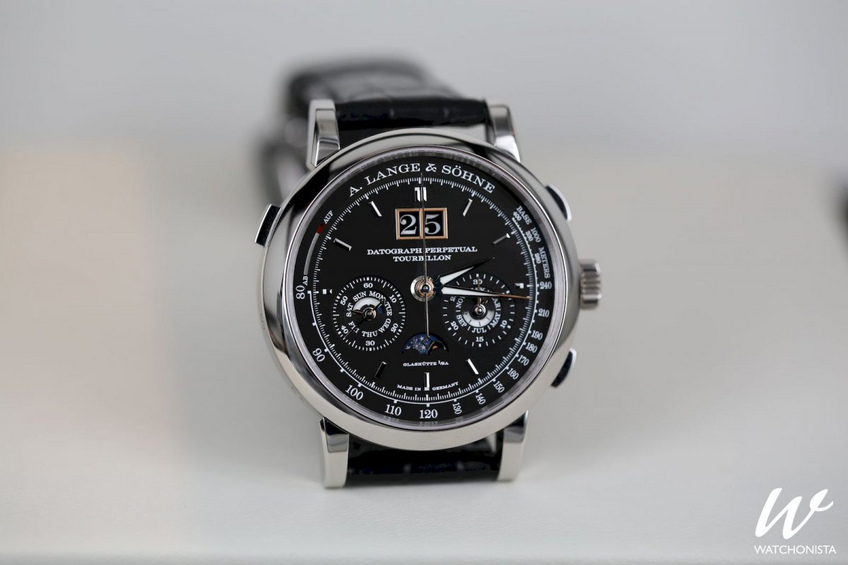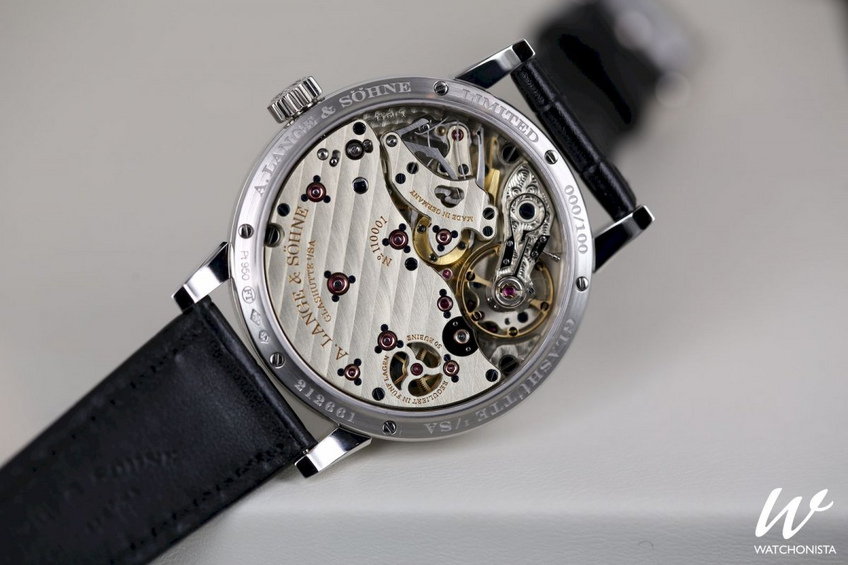

A. Lange & Söhne: a passion for elegance
Founded in 1845 by Ferdinand Adolphe Lange in Glashütte, A. Lange & Söhne has built a reputation for its omnipresent excellence. Proof of this is the quality of the collection the manufacture has introduced this year. Let’s explore!
Watch experts have seen many tourbillons through skeletonized dials. So much so, they have slowly lost interest in the mechanics which often result in aesthetic faux-pas incompatible with the graphic treatment required to transform traditional timepieces into iconic ones. As watchmakers from traditional watchmaking cantons used to say “you can have too much of a good thing”. It would seem that the master watchmakers who have long been established in Glashütte whole-heartedly agree with this. Glashütte is a small village in the heart of the Ore Mountains, located near Dresde, a town in Saxon, East Germany.

Datograph Perpetual Tourbillon
This watch is the piece that has undoubtedly attracted the most attention at the SIHH this year. With perfect mechanics, it has the whole package: a 41.5-mm platinum case and a unique hand-wound caliber (ref. L952.2) equipped with 729 components and set by a tourbillon that aficionados can look at to their hearts’ content through the transparent back. Inexperienced enthusiasts will certainly be surprised to find that the tourbillon cannot be seen once the watch is on the wrist. But that was deliberate. This muted tactic helps the complicated instrument preserve the nobility of its range that gives it an oh-so irresistible aristocratic touch in its approach to time.

Anyhow, everybody knows that pure simplicity is often the signature of perfection in high quality watchmaking. For instance, the tourbillon in this watch is equipped with a patented stop-second mechanism. It regulates the untreated nickel silver caliber that is equipped with two complications. The first is a flyback chronograph with an instantaneous counter. The second is a perpetual calendar with a sophisticated mechanism that displays a large date, weekdays, months, leap years, day/night indication and moon phases.
The perfectly readable watch also includes a sober but clear power reserve (50 hours) indicator on the rim of the solid silver dial with black hues. The magnificent and unique instrument has been produced in a limited edition of 100 pieces and is superbly worn on an alligator strap closed with a platinum deployment buckle.
The art of magnifying the date
A. Lange & Söhne is one of the brands that has contributed to steering the watch market in a new direction in the last twenty years or so by working on embedding and making pure mechanics aesthetic. In creating a new paradigm for watchmaking luxury, the brand has encouraged rival brands to focus on the concept of perceived value. Reasonable sizes, dials made with precious metals, simple cases with timeless lines, the addition of the large date on the dial and the superlative treatment of movements all have contributed to making the German manufacture a legend.
The models introduced this year, such as the Saxonia Moon Phases, a new version of the Lange 1 or even the Grand Lange 1 Moon Phases “Lumen”, all display two date apertures that are perfectly readable, even to those with diminished eyesight. All the pieces in this collection have a good balance, feature a canonical assembly that is based on the amount of gold used and are equipped with high-quality in-house calibers. Some of them are self-winding mechanisms (automatic L.086.5 for the Saxonia Moon Phases) or hand-wound mechanisms (Cal. L.121.2) for the Lange 1 or the Grand Lange 1 Moon Phases “Lumen” (L.095.4). Last but not least, the date on this watch can be read in the dark thanks to the luminescent materials used in the skeletonized parts.
Praise to simplicity
The essence of time is defined by a jump in the smallest humanly visible fraction: the second. To give it physical dimension, watchmakers had to be able to materialize it and the best way to do so was by displaying it from the tip of a long seconds hand that magically jumps from one index to another, from second to second, all day long.
This was no easy feat even though it may seem simple enough to do. While this is now a common feature of quartz watches, it has been much more challenging to adapt it to purely mechanical pieces. Indeed, the latter require an intermediary mechanism to count the oscillations before freeing a specific system that could allow the long seconds hand to repeatedly jump from one second to another.
The 39.9-mm platinum watch is available in a limited edition of 100 pieces. Its mechanical hand-wound movement (ref. L.094.1) features an original mechanism, which reminds us that the manufacture’s founder had already conceived movements with jumping seconds back in1867. Visible through the transparent back, the new caliber reveals a complex structure of a constant-force escapement behind the balance-cock with variable inertia. This device helps to smooth out the tension imperfections of the mainspring and to transmit a calibrated force to the terminal regulation group every second.

The second gear train features a jumping mechanism, which has as a function the conversion of the 6-oscillations-per-second of the balance into a single move with a hand. As already seen on Lange’s invention, this mechanical sequence drives a five-tooth star fixed on the escapement wheel that makes a complete spin every five seconds.
At each second, a tooth of the star frees a horizontal lever, also known as a balance-whip, which makes a sudden 360° rotation when it is carried by the barrel before it is blocked by the star’s next tooth. This rotation drives the gear train that is linked to the seconds’ axis, which moves the long hand to the next index itself. And since the energy produced cannot be wasted, the impulse of the jumping second is used to rewind the mainspring of the constant-force escapement and so on and so forth.
































